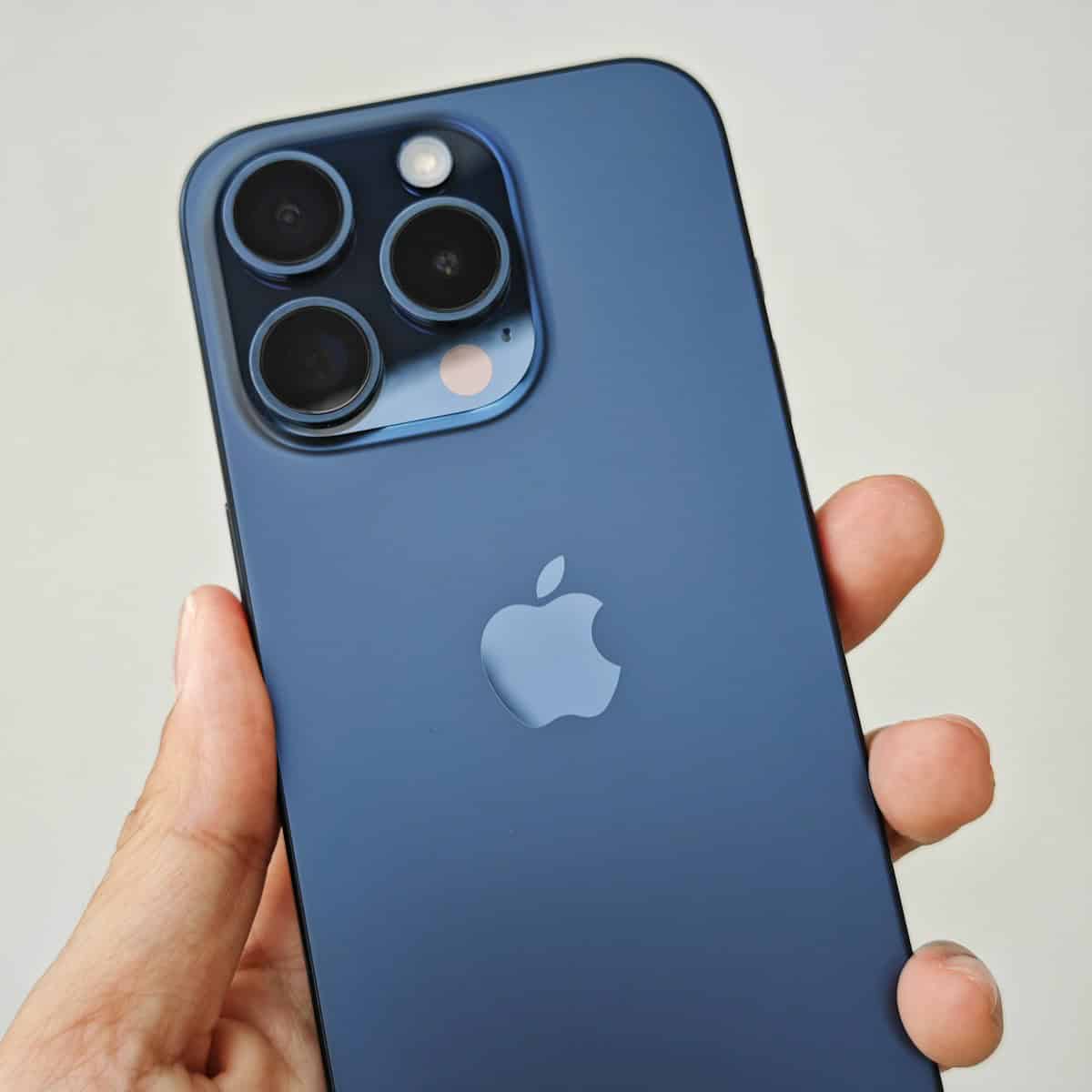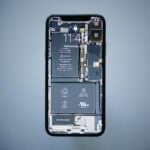The iPhone has changed how we use phones since it first came out in 2007. It started as a simple device but grew into a powerful tool we use every day. Apple has released 46 iPhone models over 17 years, each with new features and better technology.
These phones have shaped how we talk, work, and play. From the first iPhone to the latest iPhone 15, each new model brought something new. Bigger screens, better cameras, and faster chips have made iPhones more useful over time.
Apple keeps making iPhones better each year. They add new features like face recognition and better photos. The latest iPhones can even connect to satellites for emergencies. As technology grows, so does what iPhones can do.
From First Release to the Latest
The first iPhone was introduced in 2007, revolutionizing the mobile phone industry. Apple has continued to innovate and release new generations of the iPhone every year since.
The Early Years: Setting the Stage

The original iPhone laid the groundwork for the smartphone revolution. It featured a 3.5-inch touchscreen display, a 2-megapixel camera, and ran on the iOS operating system. Over the next few years, Apple released several new generations of the iPhone, each with improved features and capabilities. The iPhone 3G introduced 3G connectivity, while the iPhone 3GS boasted a faster processor and a 3-megapixel camera.
The Middle Years: Refinement and Innovation

The iPhone 4 marked a major design change, featuring a sleek glass and stainless steel body. It also introduced the Retina display, which offered a significantly higher resolution than previous models. The iPhone 4S introduced Siri, Apple’s voice assistant, while the iPhone 5 featured a larger 4-inch display and support for LTE connectivity. The iPhone 5S introduced Touch ID, a fingerprint sensor that allowed users to unlock their phone and make purchases with their fingerprint. The iPhone 6 and 6 Plus marked another major design change, featuring larger 4.7-inch and 5.5-inch displays, respectively. The iPhone 6S and 6S Plus introduced 3D Touch, a pressure-sensitive technology that allowed users to access additional features by pressing harder on the screen.
The Recent Years: Pushing Boundaries

The iPhone 7 and 7 Plus introduced a new dual-camera system, which offered improved image quality and the ability to take portrait photos with a blurred background. The iPhone 8 and 8 Plus featured a glass back design that enabled wireless charging. The iPhone X marked a major design change, featuring an edge-to-edge display and Face ID, a facial recognition system that replaced Touch ID. The iPhone XS and XS Max offered improved performance and camera capabilities, while the iPhone XR offered a more affordable option with a slightly lower resolution display. The iPhone 11 introduced a new triple-camera system, while the iPhone 11 Pro and 11 Pro Max offered improved performance and battery life. The iPhone 12 and 12 mini introduced a new design with flat edges and support for 5G connectivity. The iPhone 12 Pro and 12 Pro Max offered improved camera capabilities and a new LiDAR scanner for enhanced augmented reality experiences. The iPhone 13 and 13 mini offered improved battery life and camera capabilities, while the iPhone 13 Pro and 13 Pro Max introduced a new ProMotion display with a 120Hz refresh rate.
The iPhone 14 and 15: Power In Your Pocket

The iPhone 14 and 14 Plus build on the success of the iPhone 13 series, with improved cameras, longer battery life, and a new Emergency SOS via satellite feature. The iPhone 14 Pro and 14 Pro Max introduce the Dynamic Island, a new way to interact with notifications and activities, as well as an always-on display and a 48MP Main camera. The iPhone 15 and 15 Plus are expected to feature a USB-C port and a new A17 Bionic chip, while the iPhone 15 Pro and 15 Pro Max are rumored to have a titanium frame and a periscope telephoto lens.
The iPhone 16: Ai and The Future

The iPhone 16 is the latest generation of the iPhone, released on September 20, 2024. It is expected to feature even more advanced features and capabilities, pushing the boundaries of what is possible with a smartphone.
Table of iPhone Generations
| Generation | Model | Release Year |
|---|---|---|
| 1st | iPhone | 2007 |
| 2nd | iPhone 3G | 2008 |
| 3rd | iPhone 3GS | 2009 |
| 4th | iPhone 4 | 2010 |
| 5th | iPhone 4S | 2011 |
| 6th | iPhone 5 | 2012 |
| 7th | iPhone 5c, iPhone 5S | 2013 |
| 8th | iPhone 6 & 6 Plus | 2014 |
| 9th | iPhone 6s & 6s Plus | 2015 |
| 10th | iPhone 7 & 7 Plus, iPhone SE (1st) | 2016 |
| 11th | iPhone 8 & 8 Plus, iPhone X | 2017 |
| 12th | iPhone XS & XS Max, iPhone XR | 2018 |
| 13th | iPhone 11, 11 Pro & 11 Pro Max | 2019 |
| 14th | iPhone 12, 12 mini, 12 Pro & 12 Pro Max, iPhone SE (2nd) | 2020 |
| 15th | iPhone 13, 13 mini, 13 Pro & 13 Pro Max | 2021 |
| 16th | iPhone 14, 14 Plus, 14 Pro & 14 Pro Max, iPhone SE (3rd) | 2022 |
| 17th | iPhone 15, 15 Plus, 15 Pro & 15 Pro Max | 2023 |
| 18th | iPhone 16, 16 Plus, 16 Pro, & 16 Pro Max | 2024 |
From the revolutionary first iPhone to the cutting-edge iPhone 16, Apple has consistently pushed the boundaries of smartphone technology. Each new generation has brought exciting innovations and improvements, shaping the way we communicate, work, and play.
Every Individual iPhone Model Ever Released
Here is the list of iPhone models from 1 to 46, counting each distinct model (including Plus, Pro, and Pro Max versions) as a separate entry:
- iPhone
- iPhone 3G
- iPhone 3GS
- iPhone 4
- iPhone 4S
- iPhone 5
- iPhone 5c
- iPhone 5s
- iPhone 6
- iPhone 6 Plus
- iPhone 6s
- iPhone 6s Plus
- iPhone SE (1st generation)
- iPhone 7
- iPhone 7 Plus
- iPhone 8
- iPhone 8 Plus
- iPhone X
- iPhone XS
- iPhone XS Max
- iPhone XR
- iPhone 11
- iPhone 11 Pro
- iPhone 11 Pro Max
- iPhone SE (2nd generation)
- iPhone 12 mini
- iPhone 12
- iPhone 12 Pro
- iPhone 12 Pro Max
- iPhone 13 mini
- iPhone 13
- iPhone 13 Pro
- iPhone 13 Pro Max
- iPhone SE (3rd generation)
- iPhone 14
- iPhone 14 Plus
- iPhone 14 Pro
- iPhone 14 Pro Max
- iPhone 15
- iPhone 15 Plus
- iPhone 15 Pro
- iPhone 15 Pro Max
- iPhone 16
- iPhone 16 Plus
- iPhone 16 Pro
- iPhone 16 Pro Max
Please note that this list only includes the main iPhone models and does not include any special editions or regional variations.
Key Takeaways
- Apple has made 46 iPhone models since 2007
- Each new iPhone adds features like better cameras and faster chips
- iPhones have changed how we use phones in our daily lives
Evolution of iPhone Models
The iPhone has changed a lot since 2007. Each new model brought better features and design updates. Let’s look at how iPhones have grown over the years.
From the Original to iPhone 5s
The first iPhone came out in 2007. It had a 3.5-inch screen and no App Store yet. In 2008, the iPhone 3G added 3G internet and GPS. The App Store also launched that year.
The iPhone 4 in 2010 had a new design with a metal frame. It added a front camera for FaceTime video calls. The iPhone 4s in 2011 introduced Siri, Apple’s voice assistant.
2012 saw the iPhone 5 with a bigger 4-inch screen. It also switched to the Lightning port. The iPhone 5s in 2013 added Touch ID fingerprint scanning and a 64-bit chip.
Innovations in iPhone 6 to iPhone X
The iPhone 6 and 6 Plus in 2014 brought much larger screens. The 6 Plus was Apple’s first “phablet” with a 5.5-inch display. These models also added Apple Pay for mobile payments.
In 2016, the iPhone 7 removed the headphone jack. It pushed users toward wireless headphones. The iPhone 8 in 2017 added wireless charging.
The iPhone X marked 10 years of iPhone. It had an all-screen design with no home button. Face ID replaced Touch ID for unlocking. It also introduced the “notch” at the top of the screen.
Recent Advancements: iPhone 11 to iPhone 16
The iPhone 11 Pro in 2019 added a third camera lens. This ultra-wide lens let users take wider photos. The iPhone 12 in 2020 brought 5G and MagSafe charging.
2021’s iPhone 13 Pro had better cameras and a 120Hz display. The iPhone 14 Pro in 2022 replaced the notch with Dynamic Island. This new design turned the camera cutout into a useful feature.
The iPhone 15 Pro in 2023 switched to USB-C charging. It also got a titanium frame. The latest iPhone 16 series has the new A18 chip. It adds an Action button and more AI features.
History Of iPhone: From Beginning to iPhone 16
iPhone 1st Gen (2007)
The Beginning of an Era The first iPhone, often referred to as the “iPhone 2G,” was a game-changer in the world of mobile phones. The 1st Generation iPhone was Released in 2007 and it featured a 3.5-inch screen, a 2-megapixel camera, & came in 4, 8, and 16 GB storage options. It was the first phone to offer a truly interactive touchscreen experience, setting the stage for all future smartphones.
- Launched June 29, 2007
- 3.5-inch touchscreen display
- 2MP rear camera
- No App Store
- Single model available
iPhone 3G (2008)
Faster and More Powerful The iPhone 3G, introduced in 2008, brought 3G connectivity and GPS to the iPhone lineup. It also debuted the App Store, which would become a cornerstone of the iPhone’s functionality.
- Launched July 11, 2008
- Added 3G connectivity
- App Store launched
- Available in 8GB and 16GB storage options
- Improved camera and battery life
iPhone 3GS (2009)
The 3GS, released in 2009, offered improved performance, a 3-megapixel camera with video recording, and voice control.
- Launched June 19, 2009
- Faster processor and graphics
- 3MP rear camera with video recording
- Voice Control introduced
- Available in 16GB and 32GB storage options
iPhone 4 (2010)
A Leap in Design and Technology 2010’s iPhone 4 was a major redesign, featuring a stainless steel frame and a glass back. It was the first iPhone with a Retina display and a front-facing camera.
- Launched June 24, 2010
- Sleek new design with stainless steel frame
- Retina display with 960×640 resolution
- 5MP rear camera with front-facing camera
- FaceTime introduced
iPhone 4S (2011)
The iPhone 4S, released in 2011, introduced Siri, an 8-megapixel camera, and 1080p video recording.
- Launched October 14, 2011
- Dual-core A5 processor
- 8MP rear camera with 1080p video recording
- Siri voice assistant introduced
iPhone 5 (2012)
Bigger and Better The iPhone 5, 5C, and 5S, released between 2012 and 2013, brought a larger 4-inch screen, a lighter aluminum body, and the introduction of the Lightning connector. The 5S was the first to feature Touch ID and a 64-bit processor, while the 5C offered a variety of color options.
- Launched September 21, 2012
- Taller 4-inch display
- Aluminum unibody design
- Lightning connector introduced
- Available in 16GB, 32GB, and 64GB storage options
iPhone 5C and iPhone 5S (2013)
Cool Colors. Powerful Performance 2013 brought us the iPhone 5C (featured colorful plastic casings) and the premium iPhone 5S. While sharing similar internal specs and iOS 7 software, the 5S boasted a powerful A7 chip, Touch ID fingerprint sensor, and a more sophisticated metal construction, solidifying its position as Apple’s flagship device.
iPhone 5C
- Launched September 20, 2013
- Budget-friendly model
- Available in multiple colors
- Same internal specs as iPhone 5
iPhone 5s
- Launched September 20, 2013
- Touch ID fingerprint sensor introduced
- A7 processor
- Improved camera
- Available in 16GB, 32GB, and 64GB storage options
iPhone 6 and 6 Plus (2014)
Entering the Phablet Era 2014 saw the launch of the iPhone 6 and 6 Plus, with significantly larger screens of 4.7 and 5.5 inches, respectively. They introduced NFC for Apple Pay and improved camera stabilization, marking Apple’s entry into the phablet market.
- Launched September 19, 2014
- Larger displays: 4.7 inches for iPhone 6 and 5.5 inches for iPhone 6 Plus
- A8 processor
- Improved camera with optical image stabilization on iPhone 6 Plus
- Available in 16GB, 64GB, and 128GB storage options
iPhone 6S and 6S Plus (2015)
Introducing 3D Touch The iPhone 6S and 6S Plus, released in 2015, introduced 3D Touch, which allowed the screen to sense different levels of pressure. They also featured upgraded 12-megapixel cameras and a stronger aluminum body.
- Pioneered 3D Touch: The iPhone 6S and 6S Plus introduced 3D Touch, a pressure-sensitive display that recognized different levels of pressure, offering new ways to interact with the phone.
- Boosted Performance: Featuring the A9 chip, the devices delivered significantly faster processing speed and improved graphics performance compared to their predecessors.
- Enhanced Cameras: Both models received camera upgrades, including a 12-megapixel rear camera for capturing high-resolution photos and 4K video recording.
- Larger Display Options: Compared to previous iPhones, the 6S offered a 4.7-inch display while the 6S Plus featured a larger 5.5-inch display, catering to user preferences for screen size.
iPhone SE (2016)
Compact Powerhouse The first-generation iPhone SE, launched in 2016, packed the power of the iPhone 6S into the smaller body of the iPhone 5S. It was a hit for those who preferred a smaller, more affordable iPhone without sacrificing performance.
- Launched March 31, 2016
- Small form factor with iPhone 5s design
- Powerful A9 processor same as iPhone 6s
- 12MP rear camera with 4K video recording
- Touch ID fingerprint sensor
- Available in 16GB, 64GB, and 128GB storage options
iPhone 7 and 7 Plus (2016)
Ditching the Headphone Jack The iPhone 7 and 7 Plus, released in 2016, controversially removed the headphone jack, pushing towards a wireless future. They also introduced dual cameras for the Plus model and improved water resistance.
- Launched September 16, 2016
- Water resistant
- Dual cameras on iPhone 7 Plus
- A10 Fusion processor
- Redesigned home button with Taptic Engine
- Removed headphone jack
- Available in 32GB, 128GB, and 256GB storage options
iPhone 8 and 8 Plus (2017)
Wireless Charging Arrives In 2017, the iPhone 8 and 8 Plus added wireless charging and improved the cameras and processor. They retained the physical home button and overall design of the previous models.
- Launched September 22, 2017
- Glass back for wireless charging
- True Tone display
- Improved cameras
- A11 Bionic processor
- Available in 64GB and 256GB storage options
iPhone X (2017)
A Bold Redesign The iPhone X, also released in 2017, was a radical redesign with a near-bezel-less display, Face ID, and no home button. It marked the 10th anniversary of the iPhone and set the tone for future designs.
- Launched November 3, 2017
- All-screen design with notch
- OLED display
- Facial recognition technology “Face ID”
- TrueDepth camera system with Animoji and Portrait mode
- A11 Bionic processor
- Wireless charging
- Available in 64GB and 256GB storage options
iPhone XR, XS, and XS Max (2018)
Refining the X Design 2018’s iPhone XR offered a more affordable alternative to the XS and XS Max while retaining the key features of the iPhone X. The XS and XS Max featured OLED screens and improved dual cameras.
- Launched September 21, 2018
- iPhone XR: Budget-friendly option with LCD display
- iPhone XS and XS Max: Super Retina displays with Face ID & Dual Cameras
iPhone 11, 11 Pro, and 11 Pro Max(2019)
Advancing Photography The iPhone 11, 11 Pro, and 11 Pro Max, released in 2019, focused heavily on camera improvements, with the Pro models featuring a triple-camera setup. They also offered better battery life and more powerful processors.
- iPhone 11: Successor to the iPhone XR with a dual camera system
- iPhone 11 Pro: More powerful camera system with triple lenses
- iPhone 11 Pro Max: Largest iPhone ever with a triple-lens camera system
iPhone SE 2nd Gen (2020)
Modern Performance, Classic Design The iPhone SE 2nd Gen was a budget-friendly option packed the powerful A13 Bionic chip, offering flagship-level performance at a fraction of the price. While sporting the familiar look of the iPhone 8, it offered an improved camera with Portrait Mode and a significant boost in battery life for extended use.
- Affordable Powerhouse: The iPhone SE 2nd Gen offered the powerful A13 Bionic chip, found in flagship iPhones, at a more accessible price point.
- Classic Design with Modern Specs: It retained the familiar design of the iPhone 8, with a 4.7-inch display and Touch ID fingerprint sensor, paired with modern hardware like the A13 chip and up-to-date iOS versions.
- Improved Camera: While retaining a single-lens rear camera system, it received upgrades like Portrait Mode and improved image processing for better photo quality.
- Long-lasting Battery Life: The iPhone SE 2nd Gen offered a significant upgrade in battery life compared to its predecessor, allowing for longer usage on a single charge.
iPhone 12, 12 Mini, 12 Pro, and 12 Pro Max (2020)
5G and a New Design The iPhone 12, 12 Mini, 12 Pro, and 12 Pro Max, introduced in 2020, brought 5G connectivity and a return to a flat-edged design. The 12 Mini was notable for packing the same features as the 12 into a smaller form factor.
- All-new design with flat edges
- 5G connectivity
- Super Retina XDR displays on Pro models
iPhone 13, 13 Mini, 13 Pro, and 13 Pro Max (2021)
Enhanced Performance and Camera In 2021, the iPhone 13 series improved on the 12’s design with brighter displays, smaller notches, and enhanced camera systems. The Pro models also introduced ProMotion technology for a smoother display experience.
- Improved cameras with larger sensors and sensor-shift stabilization on Pro models
- Smaller notch
- A15 Bionic chip for even faster performance
iPhone SE 3rd Generation (2022)
The iPhone SE 3rd Generation, released in 2022, continued Apple’s tradition of offering flagship-level performance in a compact and affordable package. Powered by the same A15 Bionic chip found in the iPhone 13 series, it delivered exceptional speed and responsiveness. The camera system received a significant upgrade, boasting a 12-megapixel sensor capable of capturing high-quality photos and videos. Notably, it introduced 5G connectivity for super-fast internet speeds, making it a future-proof option for budget-conscious users.
- Affordable option with the power of iPhone 13
- 5G connectivity
- Improved cameras
iPhone 14, 14 Plus, 14 Pro, and 14 Pro Max (2022)
Making Everything Better The iPhone 14 series offered 6.1-inch or 6.7-inch display options on the A15 Bionic chip (or A16 Bionic chip in the Pro models). These phones had powerful camera systems across all the models and groundbreaking new safety features like Crash Detection and Emergency SOS via satellite, and exceptional battery life.
- iPhone 14: Successor to the iPhone 13, featuring an improved dual-lens camera system and a faster A15 Bionic chip.
- iPhone 14 Plus: New size option with a 6.7-inch display, offering the same features as the iPhone 14 but with a larger screen.
- iPhone 14 Pro: Features a more powerful A16 Bionic chip, a triple-lens camera system with a new telephoto lens and improved ultrawide lens, and a 120Hz ProMotion display for smoother scrolling.
- iPhone 14 Pro Max: Offers the same features as the iPhone 14 Pro but with a larger 6.7-inch display.
iPhone 15, 15 Plus, 15 Pro, and 15 Pro Max (2023)
Welcome to the future The iPhone 15 series (released in September 2023) marked a significant evolution for Apple’s smartphone lineup. The standard iPhone 15 and 15 Plus offered improved performance with the A16 Bionic chip, enhanced cameras with larger sensors, and a more streamlined look. The iPhone 15 Pro and 15 Pro Max continued to push the boundaries of technology, boasting a periscope telephoto lens for superior zoom capabilities, a solid-state button design for improved durability and haptic feedback, and a premium titanium frame for a luxurious feel.
- iPhone 15: A16 Bionic chip, a larger battery for longer battery life
- iPhone 15 Plus: Larger version of the iPhone 15 with the same features and specifications.
- iPhone 15 Pro: A17 Pro chip. New periscope telephoto lens for improved zoom capabilities, a solid-state button design for improved durability and haptic feedback, and a titanium frame for a more premium feel. Under display Face ID.
- iPhone 15 Pro Max: Larger version of the iPhone 15 Pro with the same features and specifications.
iPhone 16, 16 Plus, 16 Pro, and 16 Pro Max (2024)
Apple’s iPhone 16 lineup, released on September 20, 2024, continues its tradition of innovation and refinement. The base iPhone 16 and its larger counterpart, the iPhone 16 Plus, feature the powerful A18 Bionic chip, improved cameras, and longer battery life. Meanwhile, the iPhone 16 Pro and iPhone 16 Pro Max boast even greater capabilities with the A18 Pro chip, a groundbreaking new periscope camera system for enhanced zoom, a brighter and more responsive display, and a titanium frame for added durability. The iPhone 16 series caters to a wide range of users, from those seeking a reliable and capable everyday smartphone to professionals and enthusiasts demanding the absolute best in mobile technology.
- iPhone 16 and iPhone 16 Plus:
- A18 Bionic chip
- Improved camera systems
- Longer battery life
- iPhone 16 Pro and iPhone 16 Pro Max:
- A18 Pro chip
- Periscope camera system with enhanced zoom
- Brighter and more responsive display
- Titanium frame
FAQs
What are the generations of iPhones in order?
The generations of iPhones, in order of release, are as follows: 1st generation (original iPhone), iPhone 3G, iPhone 3GS, iPhone 4, iPhone 4S, iPhone 5, iPhone 5s, iPhone 6 and 6 Plus, iPhone 6s and 6s Plus, iPhone 7 and 7 Plus, iPhone 8 and 8 Plus, iPhone X, iPhone XS and XS Max, iPhone XR, iPhone 11, iPhone 11 Pro and 11 Pro Max, iPhone 12 and 12 mini, iPhone 12 Pro and 12 Pro Max, iPhone 13 and 13 mini, iPhone 13 Pro and 13 Pro Max, iPhone 14 and 14 Plus, iPhone 14 Pro and 14 Pro Max, iPhone 15 and 15 Plus, iPhone 15 Pro and 15 Pro Max, and the latest iPhone 16.
How do I tell what iPhone I have?
To find out which iPhone model you have, go to “Settings” > “General” > “About.” The “Model Name” will tell you exactly which iPhone you’re using. You can also identify your iPhone by its physical characteristics, like the size and placement of the camera lenses, the presence of a Home button or Face ID, and the overall design.
What year was the iPhone 16 released?
The iPhone 16 was released on September 20, 2024.
Which version of iPhone is best?
The “best” iPhone depends on your individual needs and preferences. The latest models, like the iPhone 15 and iPhone 16, offer the most advanced features and capabilities, but they also come with a higher price tag. If you’re looking for a more affordable option, older models like the iPhone 13 or iPhone 14 are still excellent choices with plenty of features.
What is the newest iPhone?
The newest iPhone is the iPhone 16 series.







